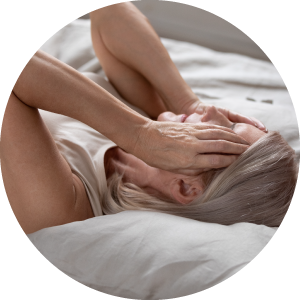Learning Objectives
By the end of this topic, the student should be able to:
- Describe the characteristics and physical and psychological impact of different types of pain.
- Differentiate between acute pain and chronic pain, and palliative, neuropathic, nociceptive, emotional, and spiritual pain.
- Describe the physical and psychological impacts of different types of pain.
Key Concepts
- Pain is a very common experience, accounting for up to 78 percent of all emergency department visits in Canada each year.
- Pain and related suffering represent significant economic, social, and health challenges in Canadian society and increase health care costs, have negative impacts on social relationships, reduce workplace productivity, and increase financial compensation.
- The absence of appropriate treatment of pain can have adverse physical, psychological, and social outcomes.
- The experience of pain is variable and individualized and thus treatment should be tailored to the type and level of pain experienced by each person.
- The appropriate use of validated pain scales reduces the risk of under-treatment and helps the persons experiencing pain improve their outcomes.
- Social factors can positively impact resilience and chronic pain (Sturgeon & Zautra, 2016).
Nature of Pain and its Management
Pain is one of the most common symptoms reported by people seeking health care. The experience of pain is individual, variable, and affected by a multitude of personal, physical, psychological, and social factors.

ake1150sb/iStock
Effective pain management requires comprehensive, individualized, and repeated pain assessment to identify the source, nature, and experience of pain.
- Opioids have a place in the treatment of acute and chronic pain, but there are risks in prescribing opioids that practitioners and people using them for pain need to be aware of.
- Practitioners need to monitor opioid use for pain to ensure that the treatment is safe and effective.
Acute Versus Chronic Pain
Acute Pain
Health Quality Ontario (2018) described acute pain as “typically a normal, predicted response to surgery, acute illness, trauma, or other injury. It is recent in onset and is a self-limiting process that generally lasts from hours to days or a month after the precipitating event. The duration of acute pain is associated with the time it normally takes for healing to occur” (p. 3).

fizkes/iStock
Onset
Usually, the onset of acute pain is sudden, localized, and lasts for a few minutes or up to several months. It can be accompanied by a physiological response such as sweating, tachycardia, elevated blood pressure, or pallor.
Causes
Causes of acute pain include injury, surgery, dental procedures, myocardial infarction, labour, and appendicitis among others.
Treatment
Acute pain usually responds to treatment. Acute pain may result in short-term disability, usually limited to the duration of the pain. When acute pain is not managed appropriately, chronic pain can develop.
Chronic Pain (Non-Cancer) or Persistent Pain
Definition
- Chronic Non-Cancer Pain
- Pain that typically persists or recurs for more than 3 months or past the time of normal tissue healing. (The Centre for Effective Practice, 2018a, p. 1)
The World Health Organization has recently recognized chronic pain as a disease (International Association for the Study of Pain, 2019). Chronic pain is often accompanied by:

kieferpix/iStock
- anger,
- anxiety,
- depression,
- altered sleep,
- frustration, as well as
- degrees of functional disability.
Chronic pain can negatively impact social and familial relationships.
The course of chronic pain may include:
- a slow onset and long duration,
- recurrent episodes of pain that last longer than three to six months,
- pain originating from an acute injury that persists beyond normal healing,
- pain accompanying a non-healing injury, or
- chronic pain resulting from inadequately treated acute pain.
Causes
Chronic pain is not associated with a cancer diagnosis. Causes of chronic pain include:
- arthritis,
- muscle strain (for example, low back pain),
- peripheral nerve damage (neuropathy), among many others.
Cancer and End-Of-Life Pain
Cancer Pain

KatarzynaBialasiewicz/iStock
Cancer pain is classified as secondary chronic pain. This classification includes chronic pain that is associated with specific medical conditions such as cancer or diabetes and others.
Pain can be related to cancer or cancer treatment (e.g., peripheral nerve damage from pharmacotherapy and skin ulceration and fibrosis secondary to radiation). Chronic pain may be a serious consequence of surviving cancer or cancer treatment.
Pain can be related to cancer or cancer treatment (e.g., peripheral nerve damage from pharmacotherapy and skin ulceration and fibrosis secondary to radiation). Chronic pain may be a serious consequence of surviving cancer or cancer treatment.
Pain in Palliative Care
Definition
- Palliative Care
- An approach that improves the quality of life of patients (adults and children) and their families who are facing problems associated with life-threatening illness. (The World Health Organization, 2020, p. 1)
A goal of treatment is freedom from pain. Palliative care prevents and relieves suffering through the early identification, assessment, and treatment of pain and other physical, psychosocial, and spiritual problems.
- Opioids are recommended for chronic and severe pain, often in combination with other non-opioid treatments
- A team approach is often required for the management of pain at the end of life.
Types of Physiological Pain
| Nociceptive Pain | Neuropathic Pain | |
|---|---|---|
| Somatic Pain | Visceral Pain | |
| Arises from musculoskeletal system | Achy, dull, throbbing, sore | Example: fracture, postoperative, infection |
| Arises from the visceral organs such as the gastrointestinal tract and pancreas | Can be diffuse and poorly localized; often referred pain to distant sites | Example: pancreatitis |
| Injury to the central or peripheral nervous system | Can follow a nerve path or be poorly diffuse | Example: phantom limb pain, complex regional pain syndrome |
Bookbinder, Marilyn & McHugh, Marlene. (2010).
Neuropathic Pain
Neuropathic pain originates from a disturbance or pathological change in a nerve.
Neuralgic pain is burning type of pain caused by an irritated or damaged nerve.
Nociceptive Pain
Nociceptive pain results from mechanical, chemical, or thermal irritation of peripheral sensory nerves, such as after surgery, trauma or with degenerative disease (Goucke, 2003). Visceral and somatic pain are nociceptive subtypes. Visceral pain comes from the organs and somatic pain comes from external structures (Sikandar & Dickenson, 2012).

Central Pain
- Central pain originates from damage to the central nervous system.
- It can result from strokes, multiple sclerosis, spinal cord trauma, Parkinson’s disease, and other injuries or conditions.

Somatic Pain
- Somatic pain originates in the skeletal muscles, ligaments, or joints.
- Examples include joint pain secondary to arthritis, fractures, muscle sprains, cuts, second- or third-degree burns, or cancer of the bones or skin.

Superficial Pain
- Superficial pain originates from the skin or mucous membranes such as minor wounds or burns.

Vascular Pain
- Vascular pain originates from damage to the vascular system that interrupts blood flow to tissues, organs, or nerves. Symptoms can include numbness, tingling, pain, or heaviness in a limb.
alexandragl1/iStock (brain, joint, skin, vascular icons)
Additional Types of Pain
Spiritual Pain
Suffering that is commonly experienced by persons with significant or life-threatening illness and their families may be spiritual pain.
- The inability to clinically manage physical pain can be due, in part, to emotional and spiritual needs.
Emotional Pain
Definition
- Emotional Pain
- An unpleasant sensory and emotional experience associated with actual or potential tissue damage. (International Association for the Study of Pain Task Force, 2019)

Wacharaphong/iStock
Psychological and social factors (culture and past experiences), emotional and cognitive states, and the conditions under which pain has occurred (trauma, injury, violence) can intensify the pain signal in the nervous system before pain is experienced in the brain.
People experiencing chronic pain are at higher risk for depression and suicidal ideation.
NOTE: There is significant stigma associated with chronic pain within society and among health and social service providers. Stigma may result in the person with chronic pain feeling devalued or inferior, blamed, or invalidated.
Assessing Pain
The experience of pain is a private, multidimensional, subjective, emotional, and physical experience that is different for each individual. A variety of factors influence an individual’s experience of pain, whether acute or chronic.
Societal factors can influence how pain is assessed. Norms, beliefs, and biases about pain can result in under-diagnosis and under-treatment of pain. Pain is sometimes seen as a normal part of life. Some may believe that the experience of pain is different depending on gender or sex. An expression of pain or a request for treatment may be seen as drug-seeking or aberrant behaviour in persons with perceived or actual substance use disorder.
Assessment of pain requires a comprehensive history that includes past and present experiences of pain, as well as:
- past and present health issues,
- social and functional status,
- relationships,
- sleep,
- activity, and
- nutrition.
Pain Scales
Pain scales are a means of assessing the domains of pain, including intensity, quality, site, and interference. Pain scales may be unidimensional (intensity) or multidimensional and include functional and social status assessments to measure the interference of pain in an individual’s quality of life.

GrafVishenka/iStock
An assessment of pain intensity can be measured by validated numeric scales. Although this type of assessment can be limited, it can be useful for assessing acute pain and response to analgesia or other interventions. Examples of validated numeric scales include the following:
- A multidimensional and holistic assessment of an individual’s experience of pain requires a validated instrument that includes questions about the impact of pain on functional status (work, quality of life) and the impact of pain on daily life, including social/family interactions, sleep, nutrition, activities of daily living, socioeconomic status, sexual health, and relationships.
- Tools such as the Brief Pain Inventory (BPI) are recommended for baseline and repeated assessments to measure change in a person’s functional status and pain intensity over time in response to treatment. Although pain intensity may not change, functional status may, and this should be the focus of pain management for people experiencing chronic pain.
- However, repeated diagnostic tests can be of limited value as finding the cause of pain can become the focus of care and treatment rather than improving the person’s functional status and quality of life.
- Results of the use of unidimensional or multidimensional pain scales should be recorded in a person’s health record just as vital signs are recorded.
- Validated pain scales are available in multiple languages, for specific cultural groups, for people who are unable to communicate, for people with cognitive impairment, and for children.
All health and social service providers should be trained in the use of the diagnostic tools related to pain assessment.
See Module 7, Topic E for more information about pain scales.
Questions
References
Biro, D. (2010). Is there such a thing as psychological pain? And why it matters. Culture, Medicine, and Psychiatry, 34(4), 658–667.
Bookbinder, Marilyn & McHugh, Marlene. (2010). Symptom Management in Palliative Care and End of Life Care. The Nursing clinics of North America. 45. 271-327. 10.1016/j.cnur.2010.04.002.
Brunjes, G. B. (2010). Spiritual pain and suffering. Asian Pacific Journal of Cancer Prevention, 11(Suppl. 1), 31–36.
Canadian Pain Society. (2014). Pain in Canada fact sheet. http://www.chronicpaintoronto.com/wp-content/uploads/2016/06/pain_fact_sheet_en.pdf
Canadian Pain Task Force. (2019). Chronic pain in Canada: Laying a foundation for action. Health Canada. https://www.canada.ca/content/dam/hc-sc/documents/corporate/about-health-canada/public-engagement/external-advisory-bodies/canadian-pain-task-force/report-2019/canadian-pain-task-force-June-2019-report-en.pdf
Centre for Effective Practice. (2018a).Management of chronic non-cancer pain. https://cep.health/tool/download/15
Centre for Effective Practice. (2018b). Chronic non-cancer pain. https://cep.health/clinical-products/chronic-non-cancer-pain/
Goucke, R. (2003). The management of persistent pain. The Medical Journal of Australia, 178(9), p.444-447.
Health Quality Ontario. (2018). Opioid prescribing for acute pain: Care for people 15 years of age and older. Queen’s Printer for Ontario. https://www.hqontario.ca/portals/0/documents/evidence/quality-standards/qs-opioid-acute-pain-clinician-guide-en.pdf
Hooten, M., Thorson, D., Bianco, J., Bonte, B., Clavel, A. Jr., Hora, J., Johnson, C., Kirksson, E., Noonan, M. P., Reznikoff, C., Schweim, K., Wainio, J., & Walker, N. (2017). Pain: Assessment, non-opioid treatment approaches and opioid management. Institute for Clinical Systems Improvement. http://www.icsi.org/wp-content/uploads/2019/01/Pain.pdf
International Association for the Study of Pain. (2019). Chronic pain has arrived in the IDC-11. https://www.iasp-pain.org/PublicationsNews/NewsDetail.aspx?ItemNumber=8340
Lilley, L. L., Rainforth Collins, S., Snyder, J., & Stewart, B. (2017). Pharmacology for Canadian health care practice (3rd ed.). Elsevier Canada.
Potter, P. A., Perry, A. G., Ross-Kerr, J. C., Wood, M. J., Astle, B. J., & Duggleby, W. (2017). Canadian fundamentals of nursing (6th ed.). Elsevier.
Sturgeon, J. A., & Zautra, A. J. (2016). Social pain and physical pain: Shared paths to resilience. Pain Management, 6(1), 63–74.
World Health Organization. (2018). Palliative care fact sheet. https://www.who.int/news-room/fact-sheets/detail/palliative-care
World Health Organization. (2020). Palliative care for noncommunicable diseases. https://www.who.int/docs/default-source/ncds/web-60609-oms-ncd-palliativecare-20200817.pdf